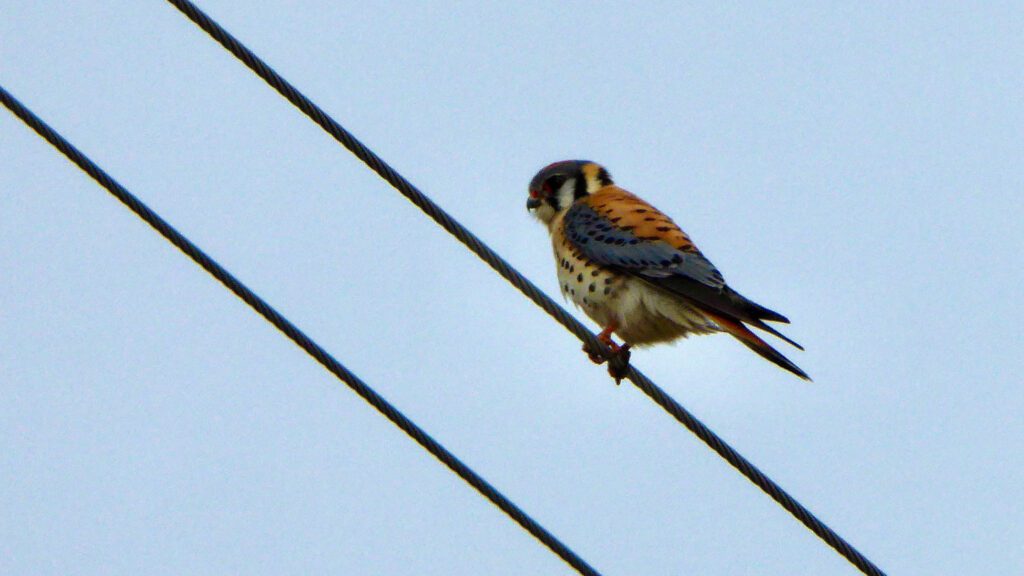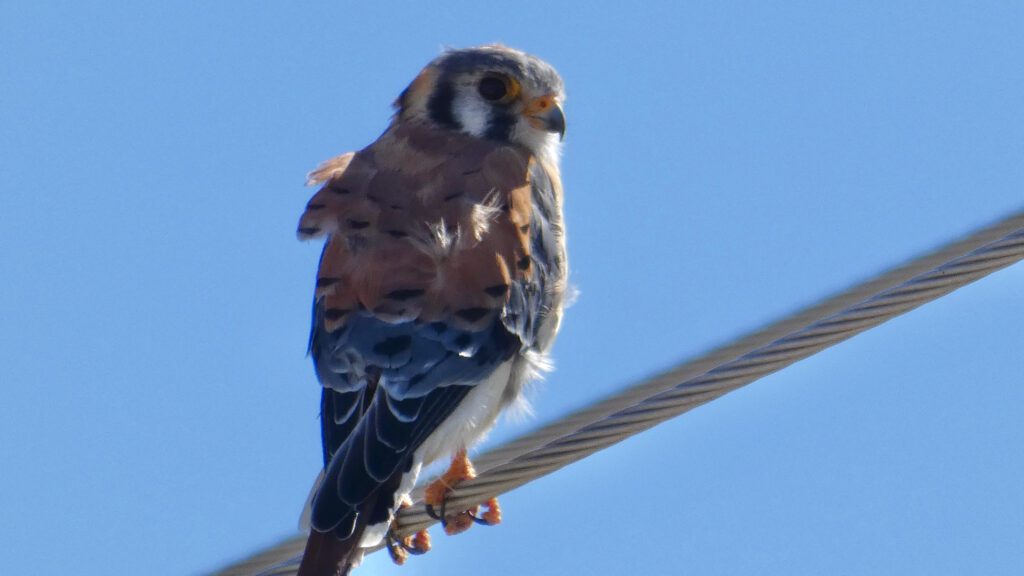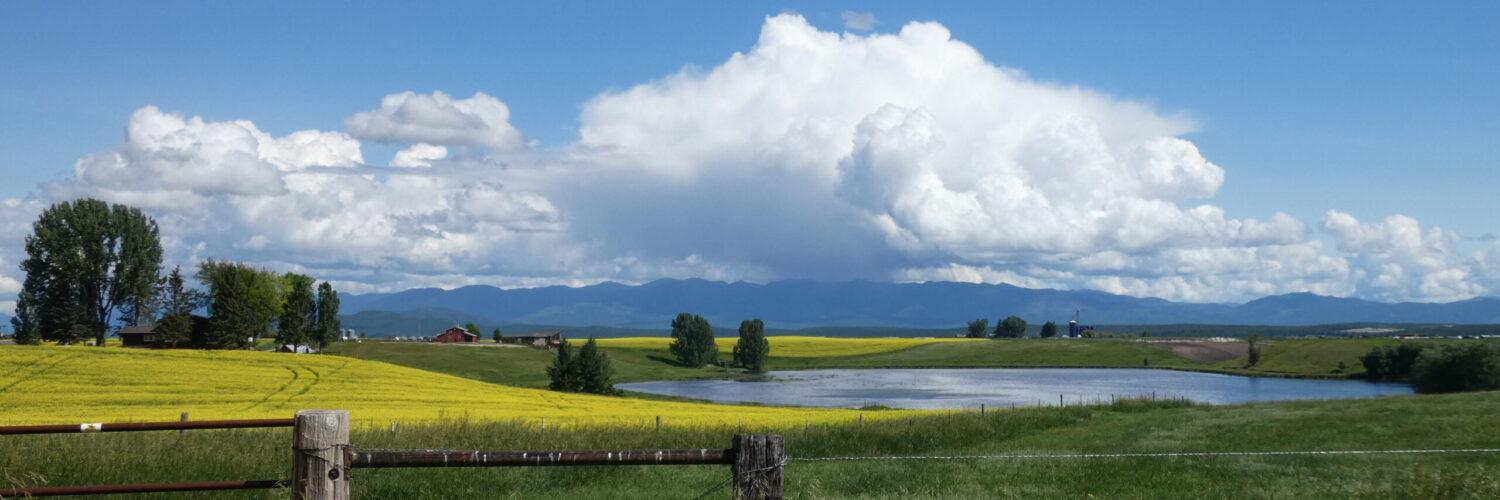by Skip Via
skip@westvalleynaturalists.org
The short answer: When it’s an American kestrel. The kestrel, sometimes referred to as a sparrow hawk, is actually the smallest species of falcon in North America, as well as the only type of kestrel found here. (And there is some debate over whether or not the American kestrel is a “true” kestrel.)
Kestrels are not typically year ’round residents of the Flathead Valley. They are most numerous during the spring migration season, when they can be easily spotted perched on utility wires and fences scouting the fields for prey–usually small rodents, small reptiles, and insects. (Fun fact from Wikipedia: kestrels can see in the ultraviolet light spectrum, which allows them to spot and track urine trails left by voles, their favorite prey. You have to marvel at evolution.)

Kestrels are long distance migrants in this area. Although some breed here in the valley, most move farther north for breeding, even all the way to interior Alaska. It’s more common to spot them in larger numbers again during their fall migration to the southern US and Central America.

Kestrels are beautifully marked. Males and females are slightly different, the female being somewhat larger than the male. Males have a rust/orange colored back, blue wings, a rust patch on the head, yellowish throat/upper chest with spots, and black slashes under the eyes as seen in many falcons such as the peregrine. Females have the same eye slashes but lack blue wings and the yellowish chest. Their backs are a duller brown and their heads are gray. The yellowish chest of the male is an easy identifier when casually spotting them perched on wires.
Sadly, kestrel numbers are in steep decline in some parts of their range. (See this article from Audubon for more depth on this topic.) It is not clear whether or not numbers have declined as much in the west as they have in the eastern US (up to a 90% loss in New England states), but a significant amount of blame seems to be focused on winter habitat areas.
